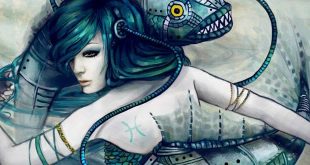 Opossum — Didelphimorphia is the order of common opossums of the Western Hemisphere. Opossums probably diverged from the basic South American marsupials in the late Cretaceous or early Paleocene. A sister group is Paucituberculata (shrew opossums). They are commonly also called “possums,” though that term is also applied to Australian fauna of the suborder Phalangeriformes. The Virginia Opossum is the original animal named “opossum”. The word comes from Algonquian wapathemwa. Colloquially, the Virginia opossum is frequently called simply possum.
Opossum — Didelphimorphia is the order of common opossums of the Western Hemisphere. Opossums probably diverged from the basic South American marsupials in the late Cretaceous or early Paleocene. A sister group is Paucituberculata (shrew opossums). They are commonly also called “possums,” though that term is also applied to Australian fauna of the suborder Phalangeriformes. The Virginia Opossum is the original animal named “opossum”. The word comes from Algonquian wapathemwa. Colloquially, the Virginia opossum is frequently called simply possum.
Their unspecialized biology, flexible diet and reproductive strategy make them successful colonizers and survivors in unsettled times. Originally native to the eastern United States, the Virginia Opossum was intentionally introduced into the west during the Great Depression, probably as a source of food. Its range has been expanding steadily northwards, thanks in part to more plentiful, man-made sources of fresh water, increased shelter due to urban encroachment, and milder winters. Its range has extended into Ontario, Canada, and it has been found farther north than Toronto.
Didelphimorphs are small to medium-sized marsupials, with the largest about the size of a large house cat, and the smallest the size of a mouse. They tend to be semi-arboreal omnivores, although there are many exceptions. Most members of this taxon have long snouts, a narrow braincase, and a prominent sagittal crest.
Opossums are usually solitary and nomadic, staying in one area as long as food and water are easily available. Though they will temporarily occupy abandoned burrows, they do not dig or put much effort into building their own. As nocturnal animals, they favor dark, secure areas. These areas may be below ground or above.
When threatened or harmed, they will “play possum”, mimicking the appearance and smell of a sick or dead animal. The lips are drawn back, teeth are bared, saliva foams around the mouth, and a foul-smelling fluid is secreted from the anal glands. The physiological response is involuntary, rather than a conscious act. Their stiff, curled form can be prodded, turned over, and even carried away. Many injured opossums have been killed by well-meaning people who find a catatonic animal and assume the worst. The best thing to do upon finding an injured or apparently dead opossum is to leave it in a quiet place with a clear exit path. In minutes or hours, the animal will regain consciousness and escape quietly on its own.
 Kids Portal For Parents India Kids Network
Kids Portal For Parents India Kids Network






